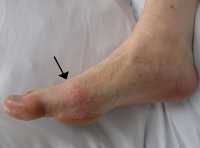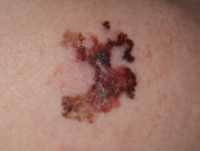AHA Journals, Author Interviews, Obstructive Sleep Apnea, UCSF / 21.06.2021
AHA Scientific Statement Highlights Link Between Obstructive Sleep Apnea and Heart Disease
MedicalResearch.com Interview with:
Yerem Yeghiazarians, MD
Professor of Medicine
Leone-Perkins Family Endowed Chair in Cardiology
San Francisco Board Past-President, American Heart Association
Co-Director, Adult Cardiac Catheterization Laboratory
Director, Peripheral Interventional Cardiology Program
Director, Translational Cardiac Stem Cell Program
Cardiovascular Research Institute
Eli and Edythe Broad Center of Regeneration Medicine and Stem Cell Research
Associate Member in Experimental Therapeutics, UCSF Helen Diller Cancer Center
University of California, San Francisco
MedicalResearch.com: What is the background for this study?
Response: Obstructive sleep apnea is very common, undiagnosed and undertreated. The AHA Scientific Statement was prepared to increase awareness amongst physicians and patients about this condition and to encourage more screening and therapy as appropriate.
Obesity is certainly one of the significant risk factors for sleep apnea and we highlight this in the Scientific Statement:
“The risk of OSA correlates with body mass index, and obesity remains the one major modifiable
risk factor for OSA. In a population-based cohort study of 690 subjects, a 10% weight gain was associated with nearly 32% increase in the apnea-hypopnea index (AHI), and even modest weight control was effective in reducing the new occurrence of sleep-disordered breathing. An even stronger correlation exists between OSA and increased waist circumference and neck size.
Neck sizes predisposing to OSA are usually >17 and 16 in for men and women, respectively.” (more…)

























 Professor Marie-Aleth Richard
EADV Communications Committee Chair
Professor, University Hospital of La Timone
Marseille, France
MedicalResearch.com: What is the background for this Roundtable event? Would you describe the mission of the European Commission’s Beating Cancer Plan?
Response: Europe’s Beating Cancer Plan is the first, comprehensive EU strategy on cancer, aimed at tackling the disease through all key stages: prevention; early detection; diagnosis and treatment; and quality of life of cancer patients and survivors. The Plan also aims to create opportunities to improve cancer care through research and innovative projects, such as artificial intelligence, and to promote equal access to knowledge and treatments in cancer care across Europe.
The EADV seeks to create a bridge between the EU health policy agenda and scientific research, by engaging with policymakers, patient organisations and other stakeholders to support a patient centric-approach; tackling melanoma and non-melanoma skin cancers (NMSC) at all stages of the pathway, from prevention to follow-up care.
Through our Roundtable event, the EADV brought together these key stakeholders to evaluate the effectiveness of the EBCP on preventing both melanoma and NMSC, as well as identify joint recommendations that step-up measures towards this goal.
Professor Marie-Aleth Richard
EADV Communications Committee Chair
Professor, University Hospital of La Timone
Marseille, France
MedicalResearch.com: What is the background for this Roundtable event? Would you describe the mission of the European Commission’s Beating Cancer Plan?
Response: Europe’s Beating Cancer Plan is the first, comprehensive EU strategy on cancer, aimed at tackling the disease through all key stages: prevention; early detection; diagnosis and treatment; and quality of life of cancer patients and survivors. The Plan also aims to create opportunities to improve cancer care through research and innovative projects, such as artificial intelligence, and to promote equal access to knowledge and treatments in cancer care across Europe.
The EADV seeks to create a bridge between the EU health policy agenda and scientific research, by engaging with policymakers, patient organisations and other stakeholders to support a patient centric-approach; tackling melanoma and non-melanoma skin cancers (NMSC) at all stages of the pathway, from prevention to follow-up care.
Through our Roundtable event, the EADV brought together these key stakeholders to evaluate the effectiveness of the EBCP on preventing both melanoma and NMSC, as well as identify joint recommendations that step-up measures towards this goal. 




